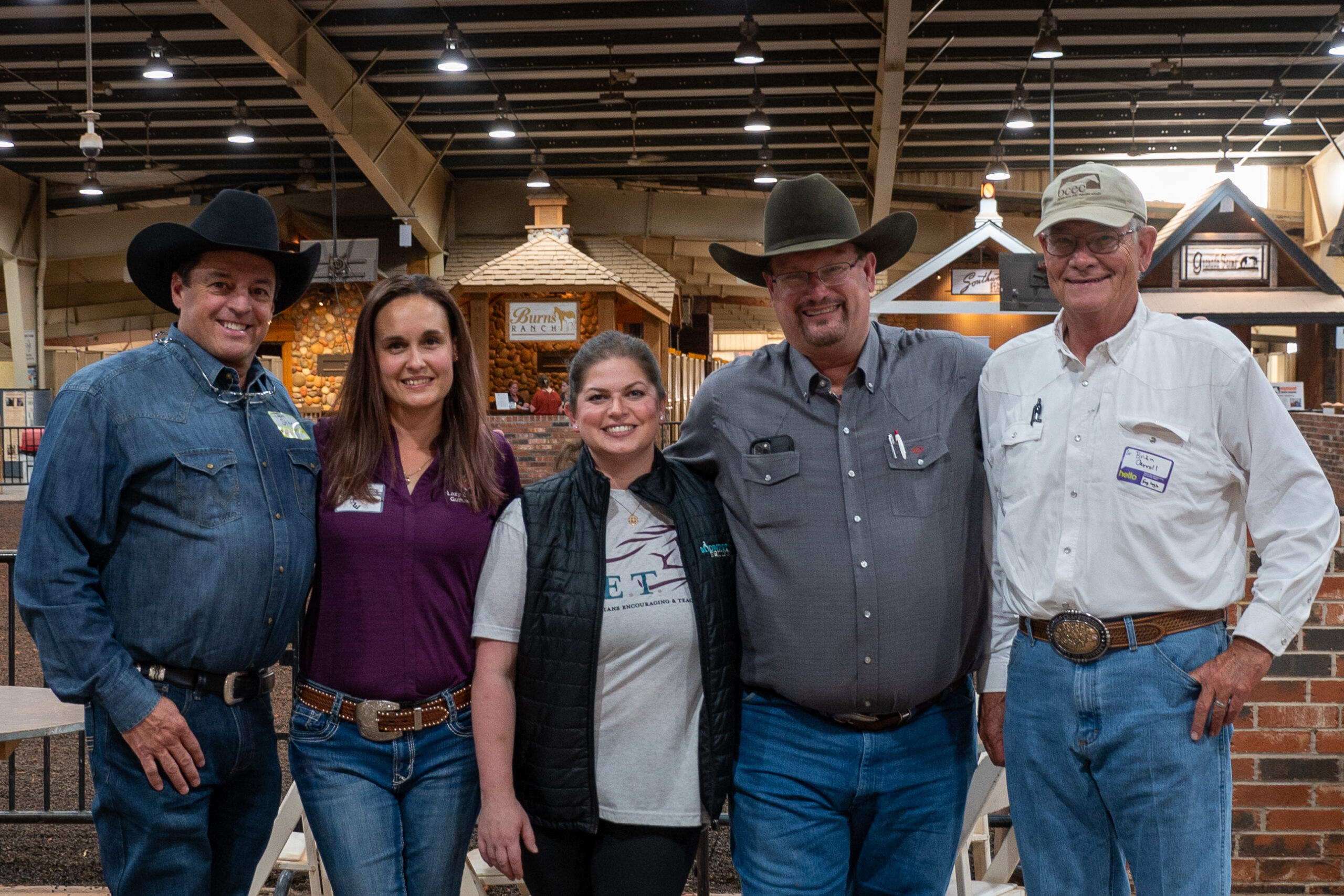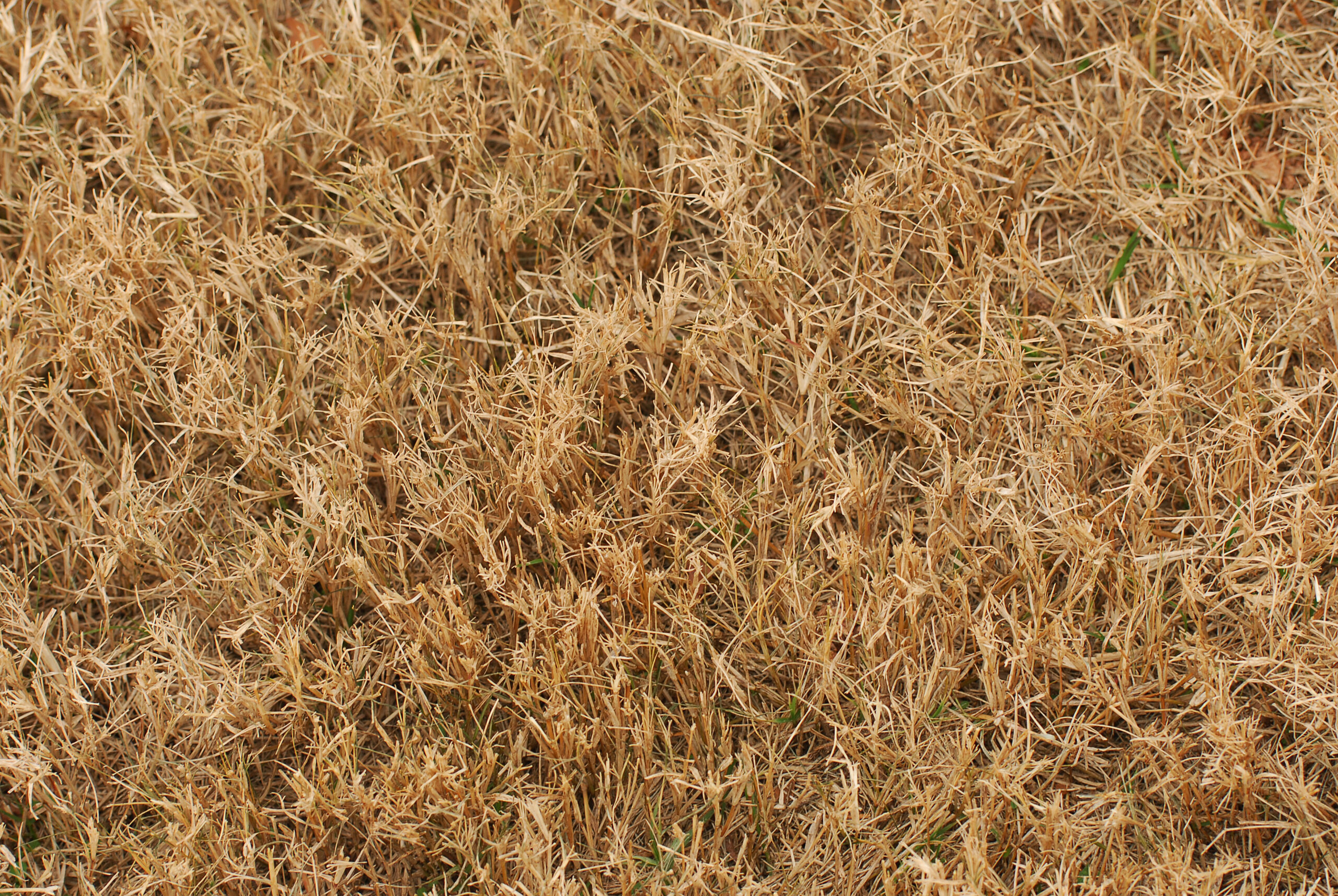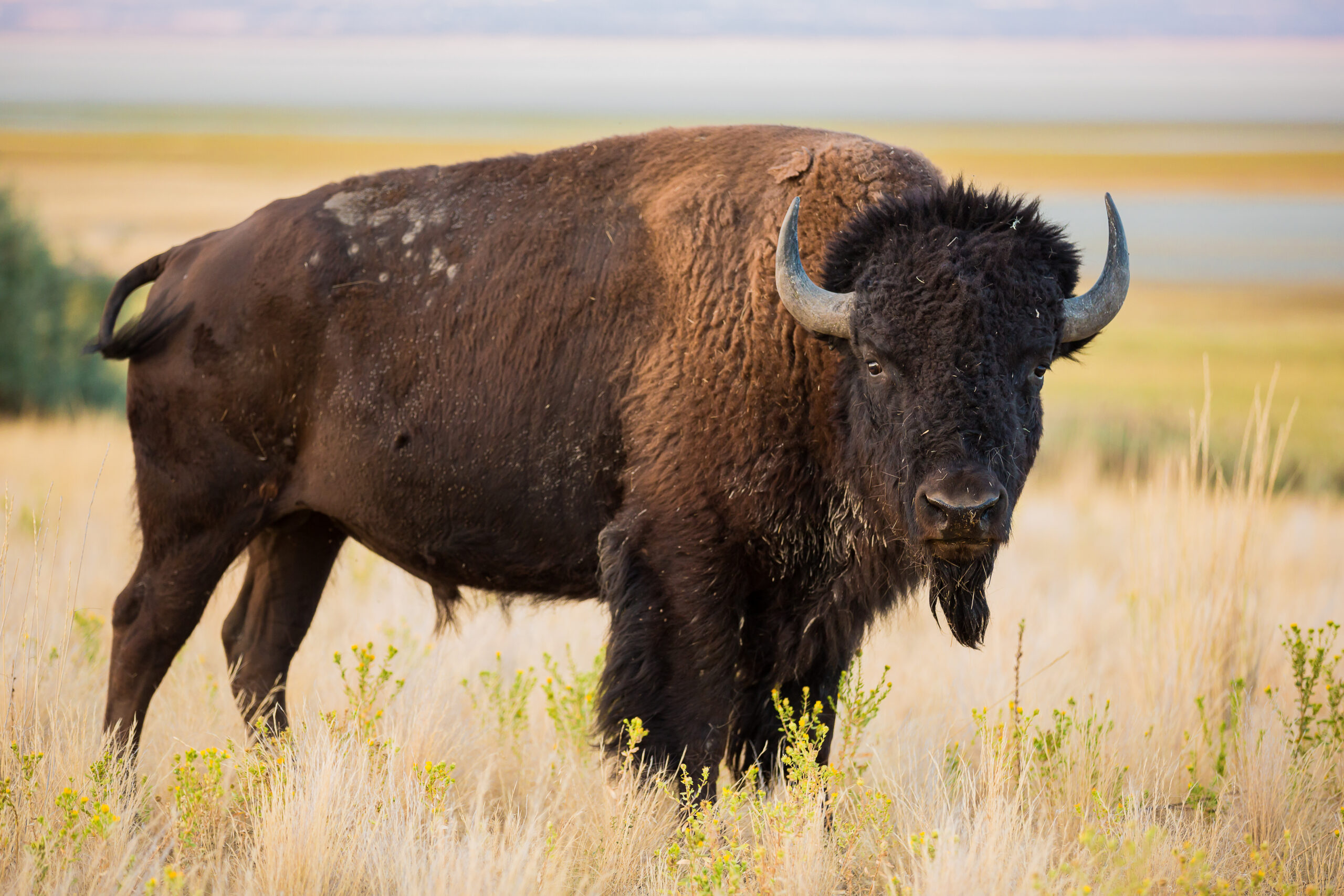Farm & Ranch
There is a Future in Equine and Large Animal Vet Medicine.

By Ddee Haynes
In the world there are two kinds of people.
Those who see a need and simply talk about it, and those who see a need and take action.
Since around 2003, there has been a shortage of Veterinarians, particularly large-animal Veterinarians in rural areas. A combination of lower wages, longer and irregular hours, (as compared to a companion pet Veterinarian) and not wanting to live outside of a major city are just a few of the reasons for the shortage. Without large animal vets, the lively hoods of farmers and ranchers is affected, and most importantly the nation’s food supply are more vulnerable to disease outbreaks.
In 2017, Butch Wise, manager of the Lazy E Ranch, Guthrie, OK, was having a hard time finding qualified equine veterinarians. Butch was not alone in the quest to find qualified equine vets. In 2017, a group of local veterinarians and industry representatives held a meeting to discuss the problem as well as possible solutions. The meeting of the five individuals produced an idea that would soon become a reality. In 2018, the non-profit organization V.E.T., Veterinarians Encouraging and Teaching became a reality.
V.E.T is a non-profit organization focused on enhancing relationships between veterinary students, private practice, and academia through social events, clinical skills labs, and mentorship avenues. The board of directors includes, Dr. Sam Crosby, Crosby Equine Services, Arcadia, OK, Dr. Trent Stiles, McKey Equine Hospital, Sallisaw, OK, Laurel Klotz, a Registered Vet Technician, as well as a Territory Manager for Midwest Veterinary Supply, Oklahoma City, OK, Dr. Brian Carroll and Dr. Amanda Wilson of Oklahoma City Equine Clinic, Oklahoma City, OK, Dr. Carly Turner-Garcia, the head veterinarian a the Lazy E Ranch, Guthrie, OK and Amber Pierce, Territory Manager for Merck Animal Health, Purcell, OK. Dr. Crosby, Dr. Stiles and Laurel are three of the original founding board members.
The goals of V.E.T. is to provide students with hands on skills, networking opportunities with local and out-of-state veterinarians for externship and internship opportunities for future employment. Symposiums which focus on the business side of veterinarian medicine and wetlabs (actual hands-on experience) have shown to be a successful way to reach those goals.
V.E.T. also partners with other like-minded non-profit organizations such as TEVA, (Texas Equine Veterinarian Association) and AAEP, (American Association of Equine Practitioners) to provide assistance with student programs, clinical skills labs and networking. This year V.E.T. will host the student clinical skills lab at the TEVA summer symposium.
V.E.T. and it’s industry partners, hold one symposium per year and at least one-two hands-on-skill training (wetlabs) per month. Both of which are open to all vet students, regardless of their year in vet college. To attend, the students only need to apply and both the symposiums and wetlabs are completely free. Depending on the subject and space, wetlabs are usually limited to 25-40 students.
The symposiums generally have two keynote speakers in the morning, followed by lunch and the trade show. The trade show provides students the opportunity to visit with animal health companies and other vet related clubs and organizations.
Last year’s symposiums featured two well-known and respected industry Veterinarians. Dr. Ben Buchanan who spoke on Equine Veterinary Medicine – How to take ownership of your future, and Dr. Meredyth Jones whose topic was Building legitimacy in large animal practices.
In order to have the wetlabs, the board must find locations that are suitable, they work with the animal health companies for the supplies needed, find animal owners willing to donate their animals for procedures, and donations to provide lunch for students and staff.
Currently, the majority of the wetlabs have been in Oklahoma and Texas. However, the goal is to expand into Kansas, Missouri, Arkansas, New Mexico, Colorado, and Louisiana.
Veterinarians are essential. A Veterinarian is the only doctor educated to protect the health of both animals and people. Veterinarians also play critical roles in environmental protection, research, food safety, and public health. V.E.T. recognizes the worth of our current and future vets, but they also realize there are obstacles that must be overcome.
In addition to pay and working conditions, another obstacle is generational differences. Each generation communicates differently which can cause conflict. All of these obstacles can be overcome with work, education, and guidance of leaders such as the board of V.E.T. which in turn will prove “There is a future in Equine and large animal Vet medicine!”
For more information on V.E.T check out the websites.
or e-mail [email protected]
Farm & Ranch
Fescue Foot

Barry Whitworth, DVM | Area Food/Animal Quality and Health Specialist for Eastern Oklahoma
*Article originally printed in the October 2022 issue of Oklahoma Farm & Ranch.
Since most of Oklahoma experienced drought conditions and with fall fast approaching, producers with fescue pastures should closely observe their livestock for any signs of fescue toxicity. According to Mike Trammel, Pottawatomie County Ag Educator and Muti-County Agronomist, fescue toxins (ergot alkaloids) tend to increase in Kentucky-31 tall fescue pastures in the fall. Some reports indicate more problems with fescue toxins following a summer drought and limited fall rains. All of this may put Oklahoma cattle at a greater risk of fescue toxicity.
One issue that cattle experience with fescue toxins is fescue foot. Fescue foot is thought to be caused by ergot alkaloids such as ergovaline. These alkaloids are produced by endophyte fungus (Epichloë coenophiala) which is in tall fescue. Ergovaline has been proven to be a vasoconstrictor which might be responsible for fescue foot and heat intolerance also known as summer slump in cattle. Other issues that may be seen with the ergot fescue toxins are reduced milk production and reproductive issues.
Clinical signs of fescue foot appear within a few days of cattle being turned on to tall fescue pastures or it may take weeks if toxins in the pasture are low. Producers will initially observe cattle with arched back, rough hair coats, and sore feet. These symptoms are more noticeable early in the morning and with cold weather. This is followed by reddening and swelling in the area between the dewclaws and hooves. The lameness usually becomes more severe with time. If no action is taken, gangrene will result in loss of tissues distal to the coronary band and declaws. If the weather remains mild, other signs such as increase respiration rate, increase heart rate, and higher body temperature are more common.
Other causes of lameness in cattle must be differentiated from fescue foot. One simple method that will help differentiate fescue foot from footrot is to check the temperature of the foot. If the foot is cold, this is an indication that the problem is more likely fescue foot.
Since there is not a specific treatment for fescue foot, the condition must be managed. Cattle need to be observed daily for any signs of lameness or stiffness during the first few weeks on fescue pastures. This should be done early in the morning before cattle walk off the stiffness. Producers should pay close attention during cold weather, especially when rain, snow, or ice are present. Any animal showing clinical signs of fescue foot should be removed from the pasture and placed in a clean environment. The animal should be fed a ration with no fescue toxins.
The best but most costly solution to reduce fescue toxicity is to renovate old pastures with new endophyte friendly varieties. If this option is not possible, producers might try interseeding fescue pastures with clovers or other grasses. This should dilute fescue toxins. Nitrogen fertilization may increase ergot alkaloids, so producers should avoid fertilizing fescue pastures with high amounts of nitrogen. Researchers have demonstrated that feeding a supplement while grazing fescue pastures reduces clinical symptoms. Some studies indicate a difference in susceptibility to fescue toxicity in some cattle. Selecting cattle based on genetic tolerance of fescue toxins is an option. (For more information go to www.agbotanica.com/t-snip.aspx)
With large areas in Oklahoma covered with Kentucky-31 fescue pastures, fescue foot as well as other fescue toxicities are not going away any time soon. Livestock producers will need to watch their livestock closely for any signs of fescue toxicity and manage their pastures to keep toxins as low as possible. If producers would like more information on fescue foot, they should consult their veterinarian and/or visit their local Oklahoma State University Cooperative County Extension Agriculture Educator.
Farm & Ranch
Animal Disease Traceability

Barry Whitworth, DVM, MPH | Senior Extension Specialist | Department of Animal & Food Sciences | Freguson College of Agriculture
On July 6, 2020, the United States Department of Agriculture (USDA) Animal and Plant Health Inspection Service (APHIS) posted in the Federal Register a proposal that radio frequency identification tags be used as official identification for cattle and bison. Following a period for public comment, the USDA APHIS released a statement on April 24, 2024, with the amended animal disease traceability (ADT) regulation for cattle and bison. The full press release may be found at https://www.aphis.usda.gov/news/agency-announcements/aphis-bolsters-animal-disease-traceability-united-states. Under the new rule, cattle and bison will need to be identified with tags that are both visual and electronic.
The USDA defines ADT as knowing where diseased and at-risk animals are, where they have been, and when the animal disease event took place. A system that allows for efficient traceability of livestock in the United States (US) is essential for animal health and reducing the economic effect of a foreign animal disease outbreak and other diseases on livestock producers as well as others whose well-being depends on livestock production.
In the past, the USDA used metal tags commonly referred to as “Brite” or “Silver” tags to officially identify cattle and bison. Also, cattle and bison vaccinated for brucellosis were tagged with an orange USDA metal tag. Recently, the USDA recognized electronic identification (EID) as an official ID. Under the new rule, cattle and bison needing an USDA official ID will be tagged will an EID.
According to Dr. Rod Hall, State Veterinarian of Oklahoma, the average cattle producer will not notice any change under the new rule and will not have to do anything differently than they are currently doing. The rule does not require mandatory tagging of cattle on a farm or ranch. Livestock auctions will continue to tag cattle that require an official USDA ID. The only change is that an EID will be used instead of a metal tag. The classes of cattle and bison requiring USDA official ID have not changed. The classes are:
Beef Cattle & Bison
- Sexually intact 18 months and older
- Used for rodeo or recreational events (regardless of age)
- Used for shows or exhibitions
Dairy Cattle
- All female dairy cattle
- All male dairy cattle born after March 11, 2013
Other common reasons that cattle and bison require USDA official ID include disease testing for brucellosis or tuberculosis and movement from one state to another state. Also, brucellosis or calfhood vaccination of heifers require official ID. The official USDA ID will be an EID starting November 2024.
If a cattle producer would like to tag their breeding cattle, electronic ID tags are available from Dr. Rod Hall. Producers will have to pay the shipping cost but the tags are free. The order form is available at: https://ag.ok.gov/wp-content/uploads/2023/04/MULTI-TAG-ORDER-FORM-v8.23.pdf. Producers with questions should call Oklahoma Department of Agriculture, Food & Forestry at 405-522-6141.
Change is usually hard. Changing how cattle and bison are officially identified will be difficult for some cattle producers. However, in the event of a disease outbreak, the use of EID should make the traceability process more efficient which is a good thing.
Producer wanting more information on the USDA amended rule on animal disease traceability should go to: https://www.aphis.usda.gov/livestock-poultry-disease/traceability#:~:text=A%20comprehensive%20animal%20disease%20traceability%20system%20is%20our,sick%20and%20exposed%20animals%20to%20stop%20disease%20spread.
Farm & Ranch
Cattle Nematodes (Worms)

Barry Whitworth, DVM | Senior Extension Specialist | Department of Animal & Food Sciences
According to the Mesonet, Oklahoma received some much-needed rain in late April (2023). With the moderate temperatures and high humidity, the environment is perfect for the proliferation of gastrointestinal nematodes (GIN) which are commonly called “worms.” Cattle can be infected with a variety of GIN. Most do not cause issues unless husbandry practices are poor. However certain GIN have been associated with disease. The most pathological GIN in cattle is Ostertagia ostertagi. Cooperia species and Haemonchus species are two that have been implicated with production issues. Control of these parasites is constantly changing due to environment, anthelmintic (dewormer) resistance, and consumer preference. Cattle producers should develop a plan to manage these parasites.
In order for GIN to complete their life cycle, certain environmental conditions must exist. The development stage begins with passing of the egg in the feces of the animal. If the egg is to hatch, the temperature must be warm and the humidity needs to be close to 100%. Ideal temperature ranges from 70⁰ to 80⁰ Fahrenheit (F), but any temperature above 45⁰ F will allow for development. Temperatures above 85⁰ F or below 45⁰ F will begin to hamper development. Humidity needs to be 80% or higher.
Once the egg hatches, the larva goes through a couple of molts to reach the infective stage which is the third stage larva (L3). L3 must have moisture to free itself from the fecal pat. Once free, it rides a wave of water on to a blade of forage. Once ingested, this begins the prepatent or pre-adult stage. Two molts take place during this stage (L3 to L4 and L4 to L5). If conditions are not favorable for survivability of offspring, L4 will go into an arrested development stage (hypobiosis) for a period of time. The patent or adult stage is the mature breeding adult.
Once inside the body, the parasite will migrate to certain locations in the digestive tract. For example, O. ostertagi develop in the gastric gland in the abomasum. H. placei and H. contortus will migrate to the abomasum. Cooperia species will live in the small intestine. A few like Trichuris (whipworms) are found in the large intestine.
Clinical signs of parasitism vary according to the species of parasite, burden, and site of attachment. Severe disease, which is referred to as parasitic gastroenteritis (PGE), with internal parasites is unusual with today’s control methods. Clinical signs of PGE are lack of appetite, weight loss, weakness, diarrhea, submandibular edema (bottle jaw), and death. However, most parasite infection are subclinical which means producers do not see clinical signs of disease. In subclinical infections, the parasite causes production issues such as poor weight gain in young cattle, reduced milk production, and lower pregnancy rates.
Producers should be monitoring their herds for parasites throughout the year but especially in the spring when conditions are ideal for infection. A fecal egg count (FEC) is a good way of accessing parasite burdens. Livestock producers need to gather fecal samples from their herd periodically. The samples should be sent to their veterinarian or a veterinary diagnostic lab. Different techniques are used to access the number of eggs per gram of feces. Based on the counts, the producer will learn the parasite burden of the herd. Producers can use this information to develop a treatment plan.
In the past, GIN control was simple. Cattle were routinely dewormed. Unfortunately, anthelmintic resistance has complicated parasite control. Now proper nutrition, grazing management, a general understanding of how weather influences parasites, biosecurity, refugia, anthelmintic efficiency, and the judicious use of anthelmintics are important in designing an effective parasite management program. All of these considerations need to be discussed in detail with a producer’s veterinarian when developing a plan for their operation.
Cattle producers need to understand that parasites cannot be eliminated. They must be managed with a variety of control methods. Designing a parasite management plan requires producers to gain a general understanding of life cycle of the parasite as well as the environmental needs of the parasite. Producers should use this information as well as consult with their veterinarian for a plan to manage GIN. For more information about GIN, producers should talk with their veterinarian and/or with their local Oklahoma State University Cooperative Extension Agriculture Educator.
References
Charlier, J., Höglund, J., Morgan, E. R., Geldhof, P., Vercruysse, J., & Claerebout, E. (2020). Biology and Epidemiology of Gastrointestinal Nematodes in Cattle. The Veterinary clinics of North America. Food animal practice, 36(1), 1–15.
Navarre C. B. (2020). Epidemiology and Control of Gastrointestinal Nematodes of Cattle in Southern Climates. The Veterinary clinics of North America. Food animal practice, 36(1), 45–57.
Urquhart, G. M., Armour, J., Duncan, J. L., Dunn, A. M., & Jennings, F. W. (1987). In G. M. Urquhart (Ed). Veterinary Helminthology. Veterinary Parasitology (1st ed., pp 3-33). Longman Scientific & Technical.
-

 Country Lifestyle7 years ago
Country Lifestyle7 years agoJuly 2017 Profile: J.W. Hart
-

 Outdoors6 years ago
Outdoors6 years agoGrazing Oklahoma: Honey Locust
-

 Country Lifestyle3 years ago
Country Lifestyle3 years agoThe Two Sides of Colten Jesse
-

 Outdoors4 years ago
Outdoors4 years agoPecan Production Information: Online Resources for Growers
-

 Equine7 years ago
Equine7 years agoUmbilical Hernia
-

 Attractions7 years ago
Attractions7 years ago48 Hours in Atoka Remembered
-

 Farm & Ranch6 years ago
Farm & Ranch6 years agoHackberry (Celtis spp.)
-

 Outdoors3 years ago
Outdoors3 years agoSuzy Landess: Conservation carries history into the future




